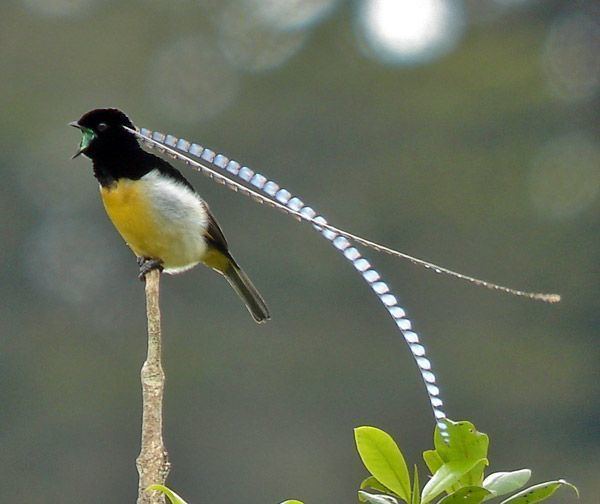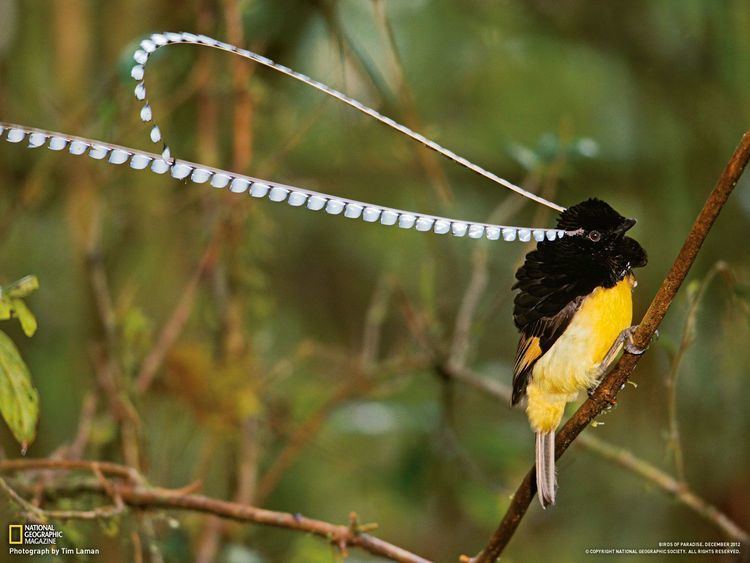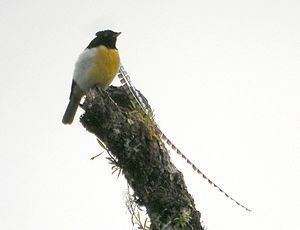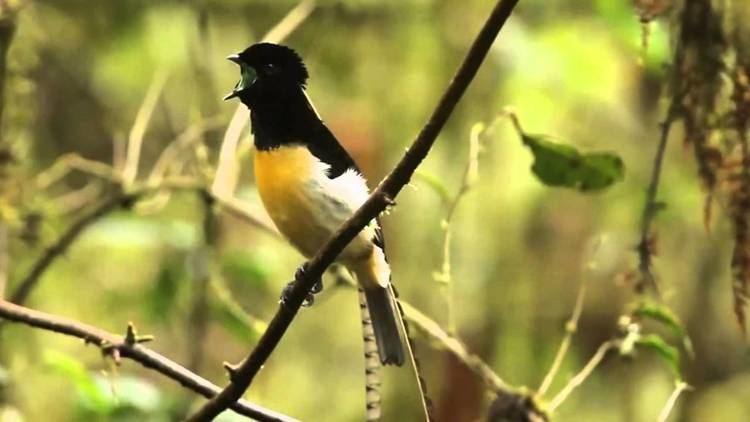Scientific name Pteridophora alberti Higher classification Pteridophora Order Passerine | Family Paradisaeidae Phylum Chordata Rank Species | |
 | ||
Genus PteridophoraA.B. Meyer, 1894 Similar Astrapia, Ribbon‑tailed astrapia, Cicinnurus, Wilson's bird‑of‑paradise, Parotia | ||
The king of saxony bird of paradise s courtship freakout papua new guinea
The King of Saxony bird-of-paradise (Pteridophora alberti) is a bird in the bird-of-paradise family (Paradisaeidae). It is the only member in the monotypic genus Pteridophora. It is endemic to montane forest in New Guinea.
Contents
- The king of saxony bird of paradise s courtship freakout papua new guinea
- Nomenclature
- Description
- Distribution
- Behaviour
- References

Nomenclature

Adolf Bernard Meyer of the Dresden Museum described this species in the December 1894 bulletin of the British Ornithologist's Club. Both the common name "King of Saxony" and the scientific specific name "alberti" were given to honour to the then king of Saxony, Albert of Saxony, whose wife gave her name to the Queen Carola's parotia.

The bird is sometimes referred to as "Kiss-a-ba" by the natives of Papua New Guinea and Western New Guinea, as a human interpretation of the male's loud call.
Description

The adult King of Saxony bird-of-paradise is approximately 22 cm long. The male is black and yellow with a dark brown iris, brownish-grey legs, a black bill with a bright aqua-green gape, and two remarkably long (up to 50 cm) scalloped, enamel-blue brow-plumes that can be independently erected at the bird's will. The unadorned female is greyish brown with barred underparts.

The male's ornamental head plumes are so bizarre that, when the first specimen was brought to Europe, it was thought to be a fake.
Distribution

The King of Saxony bird-of-paradise inhabits the montane forests of New Guinea, and is distributed from the Weyland Mountains in Western New Guinea to the Kratke Range in Papua New Guinea between 1,300–2,850 meters above mean sea level, but usually between 1,800–2,500 meters above sea level.
Moulted head-plumes in good condition are sought by male Archbold's bowerbirds for use as decorations, and in turn collected from the courtship bowers by humans. Males are also hunted for their highly prized long plumes used by natives for ceremonial decoration, but despite this the species remains fairly common in parts of its range. It is considered to be of least concern on the IUCN Red List of Threatened Species. It is listed on Appendix II of CITES.
Behaviour
Adult males are territorial. The male guards its territory from perches placed in the tops of tall trees, and from these perches sings to compete with males in neighbouring territories. While singing, the male moves his occipital plumes about. In 1996 David Attenborough filmed the first ever footage of the mating ritual of the bird.
The diet consists mainly of fruits, berries and arthropods.
